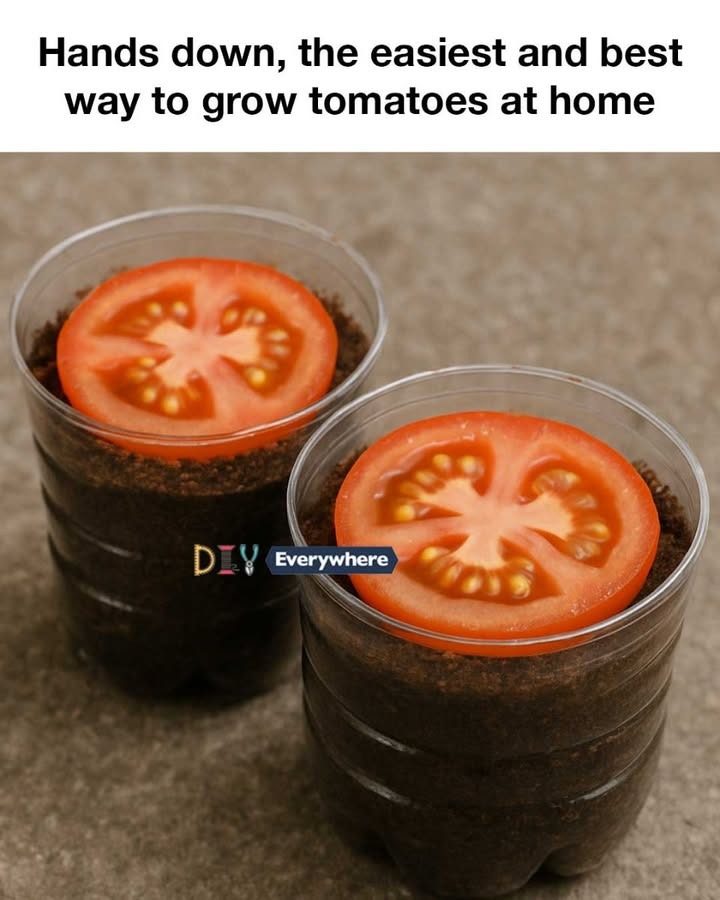Determinate (bush) tomatoes stop growing at a certain size, set fruit all at once, and are often suited to pots or container growing. Homes and Gardens+1
Indeterminate (cordon/vine) tomatoes continue growing and producing throughout the season, often taller and needing support. njaes.rutgers.edu+1
If you’re new or have limited space (pots, balconies), choose a bush/determinate variety. If you have garden space and want a longer harvest, go indeterminate.
Location & Sunlight
Tomatoes need at least 6 hours of direct sunlight daily, ideally 8 hours or more for strong production. Gardening Know How+1
Choose a site that has warm soil, good drainage, and protection from strong winds (especially if growing tall vines).
In containers or balconies, make sure the pot receives full sun.
Soil and Rotation
Tomatoes thrive in rich, well‑draining soil. The Old Farmer’s Almanac recommends digging the bed ~1 foot deep, mixing in aged manure or compost. almanac.com
Crop rotation matters: avoid planting tomatoes (or other nightshades like peppers, eggplant, potatoes) in the same spot year after year to reduce disease buildup. rhs.org.uk
Step 2: Prepare the Bed or Container
In‑Ground Planting
Dig & amend soil: Remove weeds, loosen soil to ~12 inches, mix in generous compost/manure. Reference says: “rich, free‑draining but moisture‑retentive soil” is ideal. rhs.org.uk
Check pH: Aim for slightly acidic to neutral (about 6.0‑7.0). Soil tests help.
Space plants: For garden beds, allow ~18‑24 inches (≈45‑60 cm) between plants, with ~2–3 ft (≈60‑90 cm) between rows. Good spacing improves air circulation, reduces disease. Southern Living
Support system: At planting time, set stakes, cages or wires so you can train the plants as they grow. This saves root disturbance later. njaes.rutgers.edu
Container Planting
Use a pot at least 18–24 inches in diameter (≈45–60 cm) or a 5‑gallon (≈20 litre) container. GardenDesign.com
Use quality potting mix rather than garden soil, ensure drainage holes are present.
For containers, watering and fertilising become more frequent because soil volume is limited.
Planting Depth Trick
When transplanting seedlings, plant deep: bury the stem up to the first set of leaves so roots develop along the buried stem. This strengthens the plant. almanac.com
Step 3: Planting & Early Care
Timing
Plant when all danger of frost has passed and soil is warmed (typically soil > 55 °F/13 °C). almanac.com
If starting seeds indoors, sow ~5‑6 weeks before transplant. extension.umn.edu
Transplanting
Harden off seedlings: place outdoors for a few hours each day for ~1 week to acclimatize. rhs.org.uk
Plant in the prepared bed or container. Firm gently, water well.
Mulch around the plant (~2–4 inches/5‑10 cm) after planting to retain moisture and keep soil from splashing leaves (which can spread soil diseases). almanac.com
Support & Training
For indeterminate vines: erect stakes or cages at planting so you can tie or train stems without disturbing roots later. njaes.rutgers.edu
Use soft ties (cloth strips, garden twine) so you don’t damage stems.
Train upward to improve airflow, sunlight access, and keep fruit off the ground.
Step 4: Ongoing Care & Maintenance
Watering
